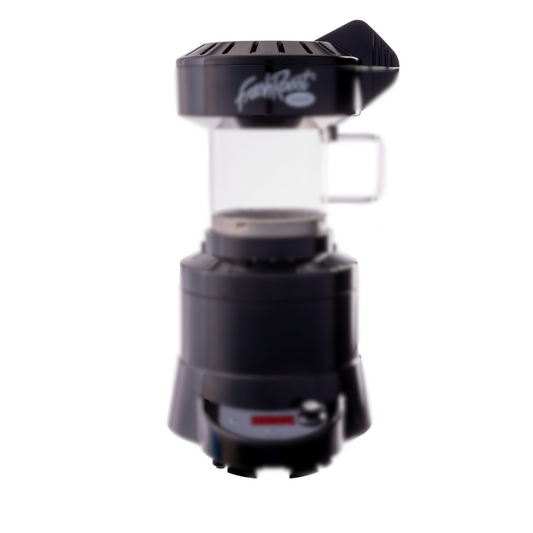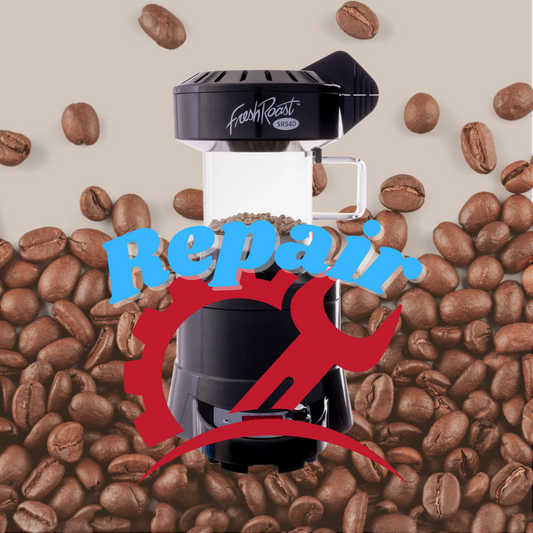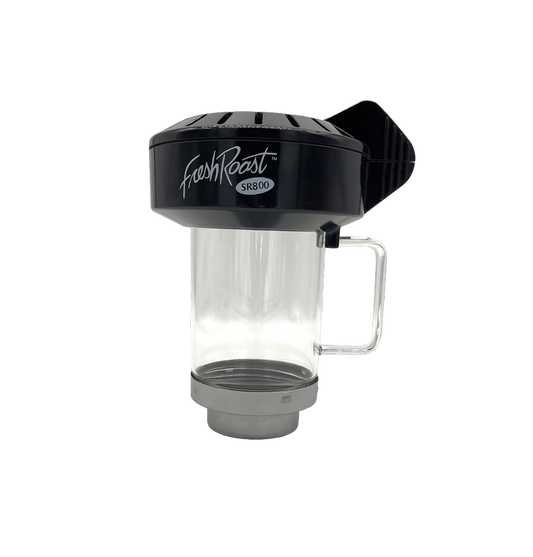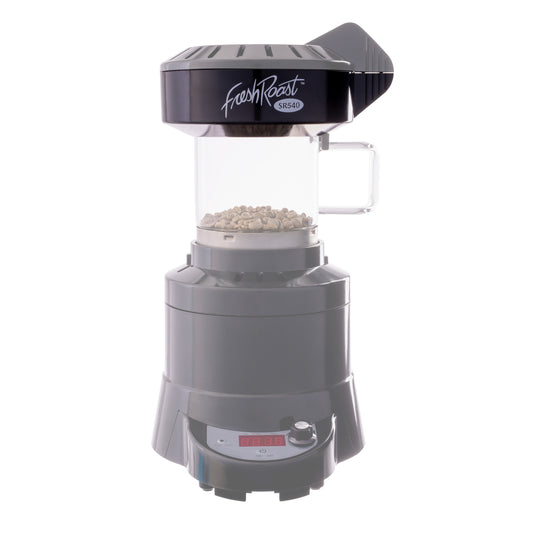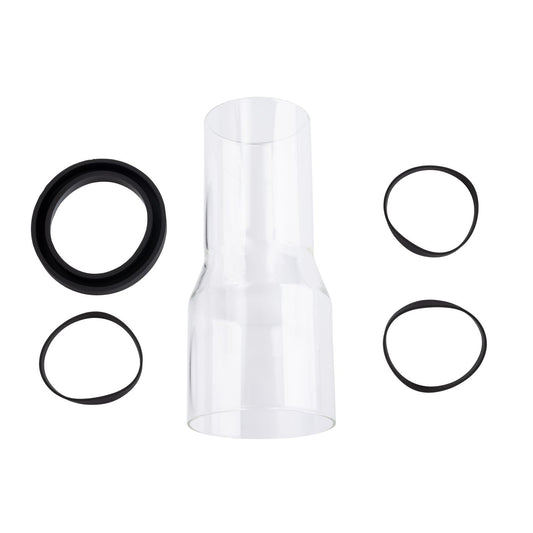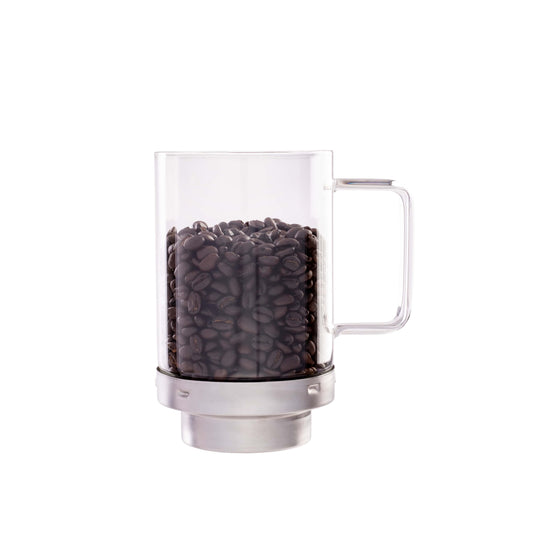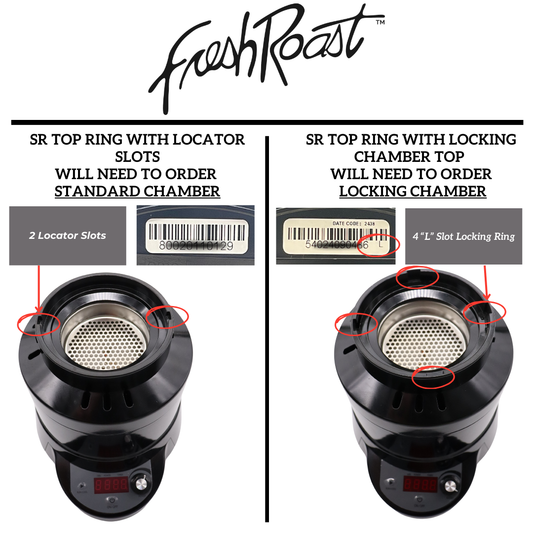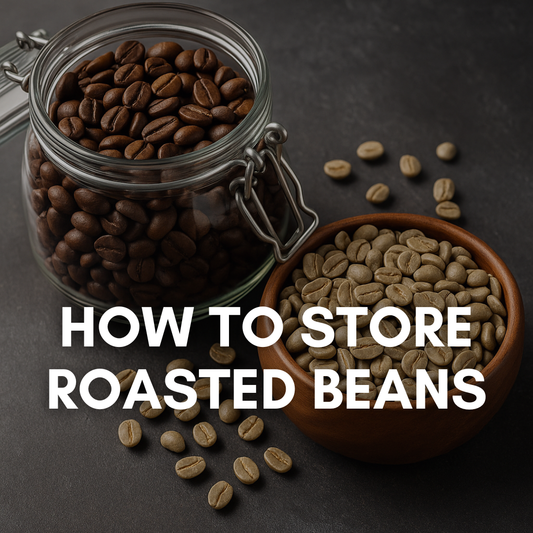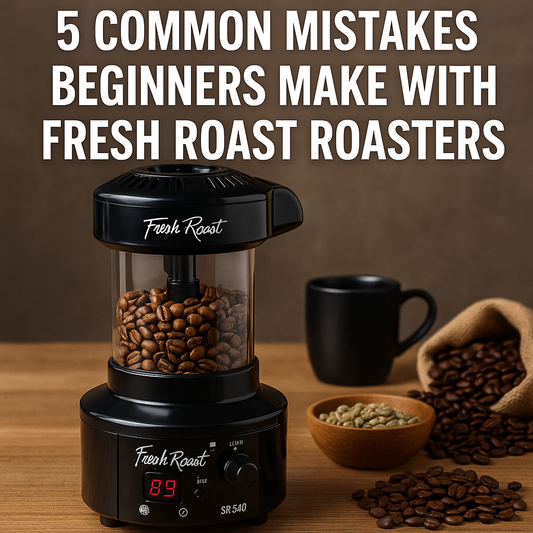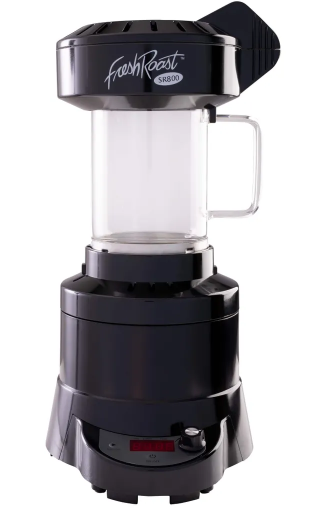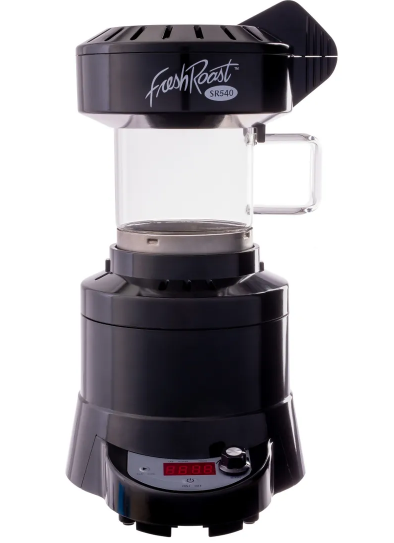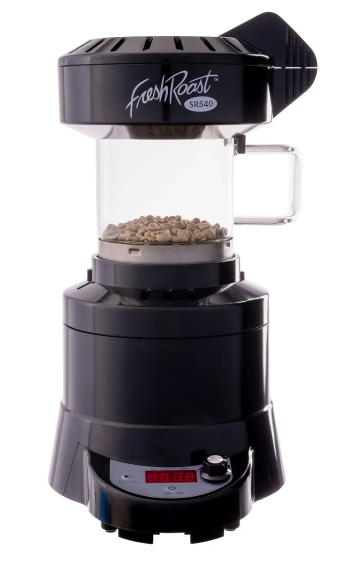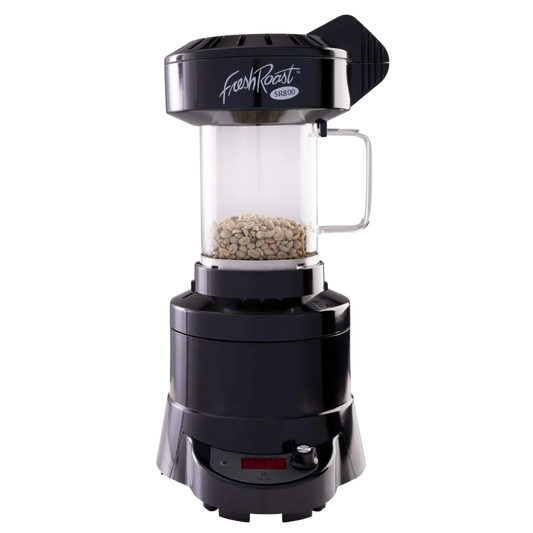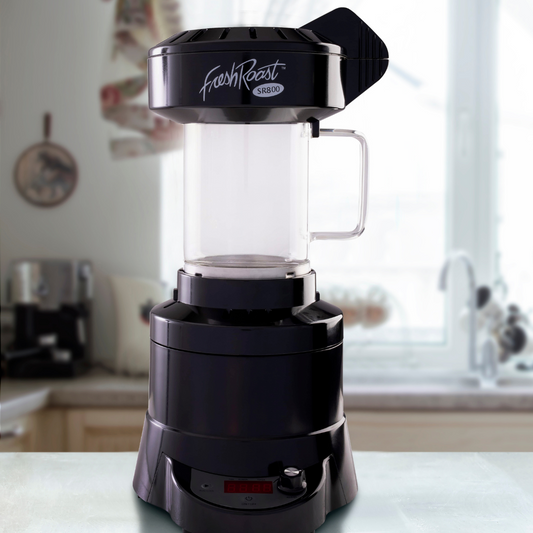
Mastering the Art of Coffee Roasting: A Comprehensive Guide
Are you ready to embark on a journey into the captivating world of coffee roasting? Whether you're an aspiring home roaster or a seasoned pro looking to refine your craft, coffee roasting is an art form that offers endless possibilities for flavor exploration. In this comprehensive guide, we'll take you on a deep dive into the world of coffee roasting, covering everything from the basics to advanced techniques. Along the way, we'll introduce you to essential resources, books, online courses, and vibrant communities that will empower you to become a master roaster.

The Magic of Coffee Roasting
Coffee roasting is the transformative process that turns green coffee beans into the aromatic, flavorful beans we use to brew our favorite coffee beverages. It's a delicate balance of time, temperature, and technique, and it has a profound impact on the taste and aroma of your coffee. The journey begins with selecting the right beans and extends to the roasting process itself, where you have the power to bring out a wide range of flavors and profiles.
Getting Started with Coffee Roasting
1. Choosing Your Beans
Before you can start roasting, you need to select the right beans. The world of coffee offers an incredible diversity of flavors, and your choice of beans will play a significant role in your roasting experience. Here are some key considerations:
-
Bean Origin: Coffee is grown in regions all around the world, each with its unique flavor profile. Whether it's the fruity and floral notes of Ethiopian Yirgacheffe or the chocolatey richness of Colombian Supremo, understanding bean origins is the first step.
-
Bean Varieties: Coffee beans come in different varieties, such as Arabica and Robusta. Arabica is known for its nuanced flavors, while Robusta tends to be bolder and more robust. Exploring these varieties will help you understand the characteristics of the beans you're working with.
-
Green Coffee Sourcing: Finding a reputable source for green coffee beans is crucial. Look for suppliers who provide information about the bean's origin, processing method, and flavor notes. Sweet Maria's, for example, is a trusted source for green coffee beans and offers detailed descriptions to help you make informed choices.
2. Equipment and Tools
Once you have your beans, it's time to set up your roasting equipment. The type of equipment you choose will influence your roasting process and the results you achieve. Here are some common options:
-
Home Coffee Roasters: There are dedicated home coffee roasting machines available that make the process more accessible. These machines often have built-in temperature and time controls, making it easier to achieve consistent results. Brands like Behmor and Gene Cafe offer popular home roasting machines.
-
Air Popcorn Popper: Surprisingly, a basic hot air popcorn popper can be a cost-effective way to start roasting coffee at home. With some modifications, it can produce excellent results for small batches.
-
Stovetop Pan Roasting: For those who enjoy a hands-on approach, stovetop pan roasting is an option. All you need is a heavy-duty pan and constant attention to the beans' movement and temperature.
-
Drum Roasters: If you're serious about roasting and want more control, consider a drum roaster. These machines mimic commercial roasting and offer precise control over temperature and airflow.
3. The Roasting Process
Now, let's dive into the heart of coffee roasting—the actual roasting process. This is where the magic happens, and you have the power to craft unique flavor profiles. Here's a step-by-step overview of the process:
a. Preheat Your Roaster
Before adding the green coffee beans, preheat your roaster to the desired temperature. The exact temperature will vary depending on your equipment and the roast level you're aiming for.
b. Load the Beans
Carefully add the green coffee beans to the roaster. The amount you roast at once is called a batch. Smaller batches are easier to control and allow for more even roasting.
c. Monitor Time and Temperature
Throughout the roasting process, you'll need to closely monitor the temperature and time. Keep a detailed log of these variables, as they will be essential for replicating successful roasts.
d. The Stages of Roasting
Coffee roasting typically goes through several stages:
-
Drying Phase: At the beginning, the beans lose moisture, and the beans' color changes from green to yellow. This phase is marked by a grassy aroma.
-
First Crack: As the temperature continues to rise, you'll hear a distinct cracking sound. This is known as the first crack, and it's a crucial milestone. The beans will start to expand and become lighter in color.
-
Development Phase: After the first crack, the beans undergo significant changes in flavor and aroma. This is where you can choose to stop the roast for a lighter profile or continue for a darker roast.
-
Second Crack (Optional): Some roasts, particularly those for espresso, may continue to the second crack. This stage yields a darker roast with more pronounced bitterness and reduced acidity.
e. Cooling and Storage
Once you've reached your desired roast level, it's essential to cool the beans quickly to stop the roasting process. Many roasters have built-in cooling features. After cooling, store your freshly roasted beans in an airtight container in a cool, dark place. They'll need a day or two to degas before reaching their peak flavor, so exercise patience.
Exploring Roasting Profiles
What Are Roasting Profiles?
Roasting profiles are like roadmaps that guide the beans through the roasting process. They involve manipulating time and temperature to achieve specific flavor characteristics in your coffee. Understanding and controlling roasting profiles is the key to crafting coffee with nuanced and complex flavors.
How to Create Your Roasting Profiles
Creating your roasting profiles can be a deeply rewarding experience. Here's a step-by-step process to help you get started:
-
Experimentation: Begin by experimenting with different time and temperature settings. Take detailed notes on each roast to understand how changes affect flavor.
-
Single-Origin Beans: Start with single-origin beans to get a sense of their natural flavors. This will help you understand how your roasting profile impacts the beans' inherent characteristics.
-
Small Batches: Roast small batches of beans to minimize waste while you're fine-tuning your profiles. Once you've found a profile you love, you can scale up.
-
Log Your Results: Keep a meticulous log of your roasts, including the bean origin, batch size, time, temperature, and the flavors you perceive. Over time, you'll build a library of profiles that work for you.
-
Taste Tests: Conduct taste tests to assess the results of your profiles. Invite friends and fellow coffee enthusiasts to provide feedback and refine your profiles further.
-
Repeat and Refine: Roasting profiles are an evolving process. Continuously refine your profiles based on feedback and your evolving taste preferences.
The Role of Online Courses in Coffee Roasting
While hands-on experience is crucial in coffee roasting, online courses can provide valuable knowledge and insights that accelerate your learning curve. Here are some reputable online courses that can help you on your journey:
Boot Coffee Campus
Boot Coffee Campus offers a wide range of courses suitable for coffee enthusiasts at all levels of experience. Their offerings cover everything from the basics of green coffee grading to advanced roasting techniques. Here are some of the courses you can explore:
-
Introduction to Coffee Roasting: Perfect for beginners, this course provides an overview of the roasting process, equipment, and basic profiles.
-
Advanced Roasting Techniques: Take your skills to the next level with advanced techniques, including profile development and troubleshooting.
-
Coffee Roasting Professional: For those considering a career in coffee roasting, this comprehensive program covers all aspects of the profession, from green coffee sourcing to roasting, quality control, and more.

Coffee Chemistry Roasting Courses
Understanding the chemistry behind coffee roasting is a valuable asset for any roaster. Coffee Chemistry offers courses that delve deep into the science of coffee, including roasting. Here's what you can expect:
-
Chemistry of Coffee Roasting: Explore the chemical reactions that occur during coffee roasting and how they impact flavor development.
-
Roasting Control and Sensory Analysis: Learn how to use data and sensory analysis to fine-tune your roasts and consistently achieve the flavors you desire.
-
Customized Consulting: For those looking for personalized guidance, Coffee Chemistry offers customized consulting services to address your specific roasting challenges.
Cropster Education
Cropster, a leading coffee roasting software provider, offers a wealth of educational resources through Cropster Education. While their platform is primarily focused on data management and analysis, it plays a crucial role in modern coffee roasting. Here's what you can explore:
-
Data-Driven Roasting: Learn how to use data to optimize your roasting profiles and achieve consistency in your results.
-
Roast Development Workshops: Participate in workshops and webinars conducted by coffee experts to deepen your understanding of the roasting process.
-
Cropster Roast Summit: Join the annual Cropster Roast Summit, where industry leaders share their knowledge and insights on roasting, technology, and sustainability.
Coffee Roasting Communities and Forums
Connecting with other coffee enthusiasts and roasters can be incredibly valuable. It's an opportunity to share experiences, seek advice, and learn from others who share your passion. Here are some vibrant coffee roasting communities and forums to explore:
Home-Barista Forum
Home-Barista is a thriving community of coffee enthusiasts, including those who roast at home. Here's why you should consider joining:
-
Diverse Discussions: Engage in discussions that cover a wide range of coffee topics, including home coffee roasting. It's a place to ask questions, share your experiences, and connect with like-minded individuals.
-
Equipment Reviews: If you're looking for insights on roasting equipment or tools, you'll find plenty of reviews and recommendations from fellow members.
-
Roasting Profiles and Tips: Browse through threads where members share their roasting profiles, troubleshoot issues, and offer tips for achieving specific flavor profiles.
CoffeeGeek Forum
The CoffeeGeek forum is a well-established community with a dedicated section for home roasting. Here's what you can expect:
-
Extensive Archive: Explore a wealth of historical discussions and threads on coffee roasting. You'll find a treasure trove of information and experiences shared by coffee roasters from around the world.
-
Roasting Equipment: Get insights into various roasting machines, their pros and cons, and user experiences.
-
Green Coffee Sourcing: Discover tips and recommendations for sourcing green coffee beans from different regions.
r/roasting on Reddit
Reddit's r/roasting community is a bustling hub where coffee roasters from all backgrounds come together. Here's why it's worth a visit:
-
Active Participation: Join a community that actively shares roasting experiences, asks questions, and offers advice to fellow roasters.
-
Sharing Profiles: Members often share their roasting profiles and discuss the nuances of different beans and techniques.
-
Troubleshooting Help: If you encounter issues during your roasting journey, don't hesitate to seek help from the community. You're likely to find solutions and valuable insights.
Your Path to Coffee Roasting Excellence
Your journey into the world of coffee roasting is a rewarding and never-ending exploration of flavors and techniques. Armed with knowledge from books, insights from online courses, and camaraderie from coffee roasting communities, you're well-equipped to master the art of roasting.
Remember that patience, experimentation, and a thirst for knowledge are your greatest allies. Each roast is an opportunity to learn and refine your skills. As you continue your coffee roasting journey, you'll unlock the secrets of beans from around the world, develop your signature profiles, and brew cups of coffee that are a true reflection of your passion and dedication.
So, embrace the adventure, savor the flavors, and share your coffee creations with friends and family. With each roast, you're not just crafting coffee; you're crafting memories and moments that revolve around this beloved beverage. Happy roasting!

